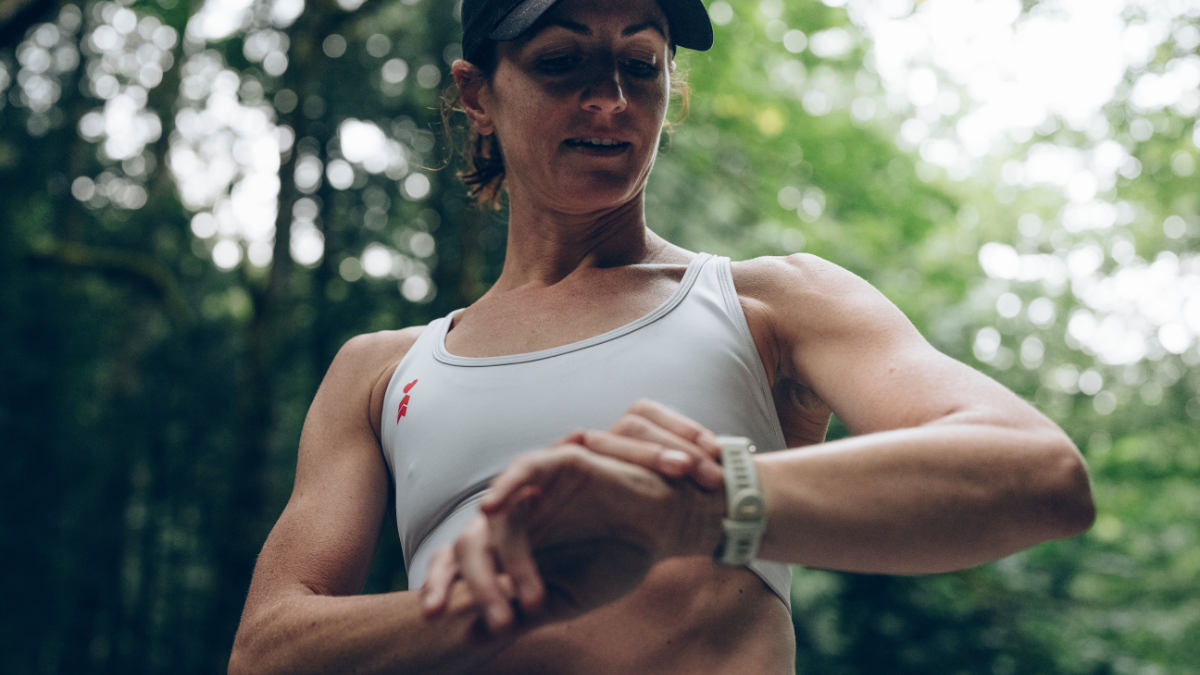As a coach, one of the most frequent questions my athletes ask me is, ‘Is my HRV number good or bad?’. The answer is, ‘It depends…’, and in this article, I’ll explain some of the factors that matter the most when interpreting your (or your athletes’) HRV number.
1. Age
Heart Rate Variability (HRV) declines naturally with age. For someone with a chronological age of 40, the average HRV is 65*. Higher aerobic fitness levels often translate into higher HRV scores, so many endurance athletes will be up towards, or even beyond the green line, i.e. 80 or above.
An important caveat to this is that the physical position of the body in which the measurement is taken has a great effect on the HRV value. A supine position (lying down) scores usually three to five points higher than sitting, which again is three to five points higher than standing. I advocate for standing as the best position for well-trained athletes since it avoids possible saturation effects that can occur with low resting heart rates when lying down.
2. Relation to Resting Heart Rate (RHR)
When asked to review an athlete’s HRV data, the first thing I look at is a timeline chart that shows their HRV, resting HR, and how any training variable changes over time. The example chart below shows both daily values and the underlying (but all-important) seven-day (weekly) rolling average trend.

This period of HRV data, from a 50-year-old lifelong sports enthusiast, shows a number of desirable aspects:
- His HRV is high for his age (baseline 85-90).
- He has a low resting heart rate (HR baseline low-mid 50s).
- There is relatively little daily variation in HRV or HR with daily training which shows good resilience.
- There’s a slowly widening gap between HRV and HR, showing a fitness improvement.
Overall, this shows a healthy, resilient athlete who’s reaping the benefits of his training. Looking at these trends over time — which you can do with a TrainingPeaks Premium account when you’ve synced your account with a compatible device — is far more informative than simply considering an HRV number on any given day. To do so, navigate to your TrainingPeaks calendar on the web app and click on a “Metric” card to visualize how your HRV has changed over time.

On the other hand, data from this competitive cyclist (below) shows some less desirable characteristics:
- He has a relatively lower HRV baseline (70-75) and higher resting HR (50-65 bpm).
- There are frequent dips in HRV after more intense training days (taller black bars.
- There’s a narrowing gap between HRV and HR with signs of sickness (red-colored dot).
- The high variation of daily readings is often a cause for concern, suggesting that only marginal changes in total load cause a significant impact on the individual.
3. Phase of Training

Blocks of Increased Intensity
Increased intensity will often lower HRV as it represents additional stress on the body, stimulating adaptation. But this reduction should be moderate (approx. 5-10%) and the value should bounce back quickly once the athlete reaches the de-loading recovery week of the training block.
High-Volume Base Aerobic Training:
During base building, HRV usually rises modestly (approx. 5% increase) and resting HR also decreases a small amount. This shows the body is coping well with the training loads.
Pre-competition Taper:
During a taper, HRV will rise following a reduction in load, but will often plateau and decline a little, coinciding with a small rise in resting HR in the 3-5 days leading up to the event. This is fine and shows that the body’s fight or flight system is primed & ready for action.
4. Lifestyle
Quite often, you can’t explain all variations in an athlete’s HRV by looking at their training loads. This is because HRV is a great barometer of overall stress and recovery, dictated by the imposed total load.
Total Load = Physical Stress + Nutritional Stress + Mental/Emotional Stress
In short, you can only train as hard as your lifestyle allows. Athletes who pay attention to managing nutritional and mental/emotional stress and who sleep well will have a higher, more consistent HRV baseline. As such, they will be able to train harder than those whose lifestyles and diets are disorganized or inconsistent.
HRV is a great tool with which to see quantifiable improvements in lifestyle factors, often after only a short time. This will reinforce motivation or encourage athletes to adopt and keep to new habits.
Summary
In summary, you can:
- Use the chart above to get a range of healthy values for your athlete’s age (between the blue and green lines).
- Expect dips in HRV and a downward trend of 5-10% when deliberately overreaching, but look for a rapid rebound once the intensified period ends, and during pre-race tapering.
Experiment with lifestyle to achieve marginal gains in baseline HRV that will allow you to train harder and become more resilient.






